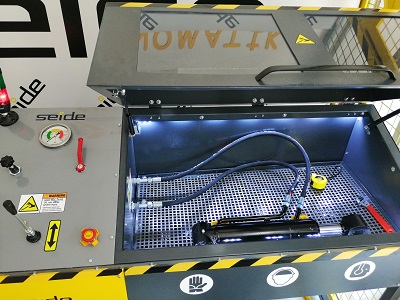


Hydraulic Cylinder Maintenance: Tips for Optimal Performance
Regular hydraulic cylinder maintenance is critical to maximize the maintenance of your system and keep it running efficiently.
Regularly monitor the cylinder parts for signs of wear, pitting, or damage. Moisture, whether caused by air or hydraulic fluid, can lead to deformation of the cylinder. Water contamination in the oil can lead to major malfunctions, so it is important to clean the liquid. In addition, due to increased costs, the wear of seals may accelerate. Pitting can cause similar problems.
Misalignment is often the main cause of wear on a cylinder. Premature wear of bearing seals occurs due to overload. The optimal solution for this type of damage is to re-chrome or polish the rod. If a cylinder replacement is required, it is necessary to first solve the source of the problem, otherwise the life of the new cylinder may also be short.

Many hydraulic failures are caused by contamination of the oil. Therefore, making sure the oil is clean is the most important stage of maintenance. If there are no particles that can cause pollution, it is important to filter the oil. If there is debris in the filters, this can affect the quality of the fluid in the system and lead to bigger problems.
Installing high-efficiency filters and replacing them regularly extends the life of the system. Using differential pressure gauges to monitor filter changes optimizes maintenance processes.
For cylinders with high operating time and density, it is a good idea to keep a spare cylinder by performing a "critical spare" part analysis. Alternating use between rollers prevents excessive wear and ensures that each cylinder works efficiently for a long time. In addition, by maintaining the cylinders removed from the system, they can be repaired as needed.
Before reassembling the cylinder, replace all gaskets. The overall condition of the cylinder can give you important clues about the health of your system. For example, high oil temperatures in the system may indicate that the oil needs to be replaced.
All parts of the cylinder are just as important as the cylinder itself. Wear or damage to accessories such as pivot pins or forks leads to gaps in the joints and alignment problems. This, in turn, can cause the cylinder to wear out faster or cause permanent damage.
End-of-Stroke Bypass Test: This test is crucial to maintain optimal performance of the cylinder. During the test, the condition of the seals at both ends of the cylinder is checked. However, since the center of the tube is the area that is usually exposed to more damage, the test should be done here.
Mid-Stroke Bypass Test: This test for double-acting cylinders is used to test piston seals. However, caution must be exercised due to the fact that the cylinder can produce a large force.
Hydrostatic Test: This test is performed in case of any rupture of the piston and helps to detect leaks in advance. During this test, the pressure at the rod end may be too high, which can lead to cylinder failure. Therefore, it is very important to use a pressure relief valve during testing.

Hydraulic cylinder repair is generally simpler than other systems. However, internal and external leaks are the most common problems. In order to determine the damage, the cylinder should be disassembled and all parts should be examined in detail.
Our cylinder repairs include a free appraisal to determine how many defective parts can be repaired. In cases where it cannot be repaired, a new unit may be recommended. The feasibility of the repair is evaluated by considering the reliability and future performance of the system.





